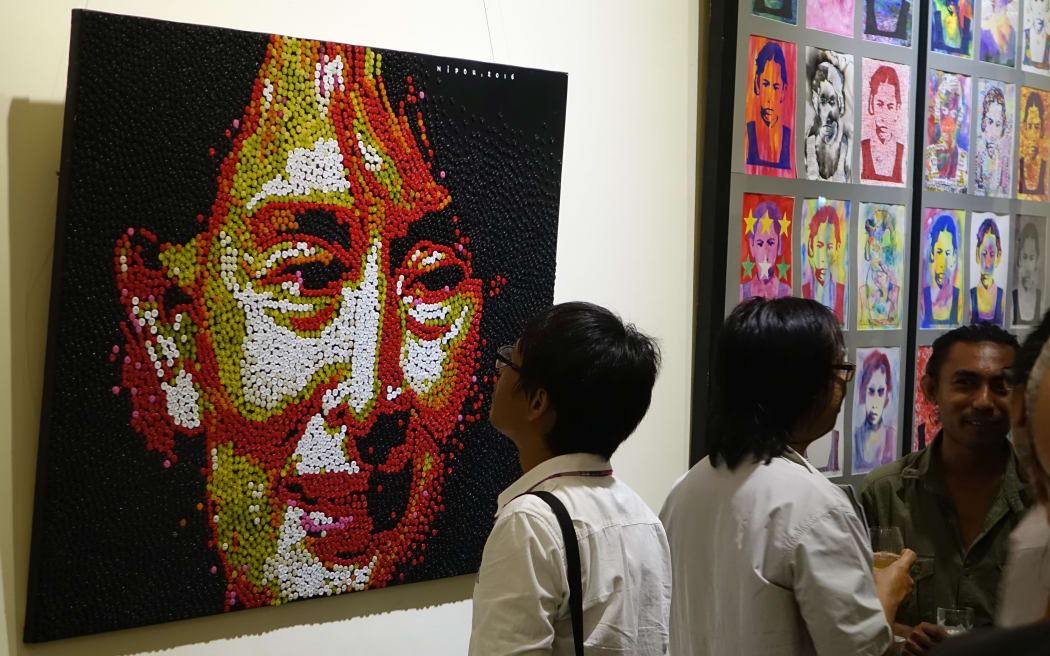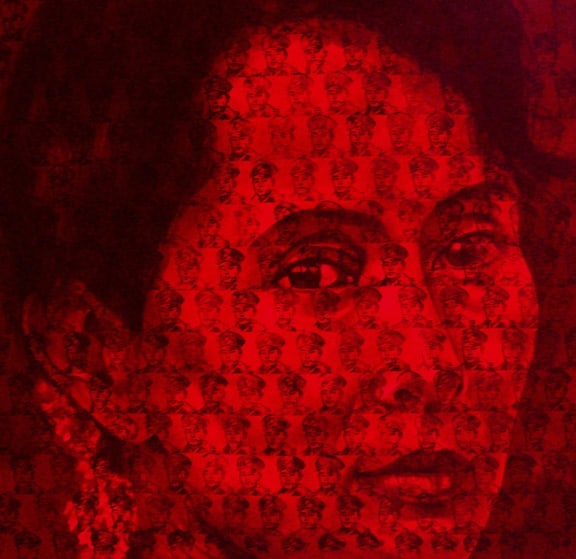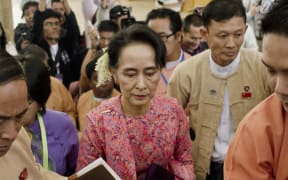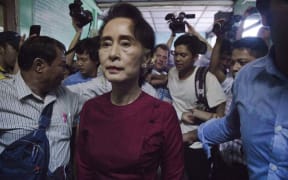When Gill Pattison latched on to the idea of opening an art gallery in Myanmar, the country was under a military government not exactly focussed on the needs of artists.

Art on display in Yangon, Myanmar, in celebration of the River Gallery's 10th anniversary. Photo: RNZ / Graeme Acton
That was in 2002, and the New Zealander had seen the gaping hole in the Yangon arts scene on her arrival in the city, which led her to set up River Gallery in the capital.
However the gallery itself came about almost by chance.
A couple of years after moving to Myanmar with her family, Gill discovered that many of the best Myanmar artists were producing works for a 2004 ASEAN-wide art competition. But just weeks before the submission deadline, the organisers removed Myanmar from the line up.
Gill jumped into the void that opened up and organised the first Myanmar Contemporary Art Awards, which attracted nearly 500 entries. Among them she saw some startlingly accomplished and creative works, and the seeds for a future gallery project had been sown.
When River Gallery first opened its doors in November 2005, nobody was sure it would last even six months, but in Yangon this weekend, artists, friends and supporters gathered to celebrate the power of art in a country where free expression is the new norm.
Ten years on, the gallery is a major hub in the Yangon arts scene and the arts infrastructure of the country.
Running an art gallery in a nation where military censorship until recently put paid to any criticism of the regime was difficult.
"(But) I think with the political changes now, things can only be positive for art and artists," she said.
Things weren't always that way of course, and it was only by careful invitation of the artist that work critical of the military regime could be viewed for many years post-1990.
The former government sought a controlling influence over art and artists, and Gill remembers an occasion when staff were preparing to exhibit finalists of a national portrait competition.
Censorship of the media had been removed, and the suggestion was that censorship of art would also be lifted.
Gill decided to invite the 12-member art "censorship board" to review the exhibition beforehand.
"They duly arrived, gave all the works a cursory glance, apart from one, which they gathered around and discussed intensely."
It was a dramatic portrait of the then-opposition leader Aung San Suu Kyi (who is also known as Daw Aung San Suu Kyi) in monochrome red, with tiny portraits of her father stamped all over the image.
"I believe this was the first portrait of Daw Suu to be seen in public for decades," she said.
The censors were "in a pickle", some were arguing that the work was far too sensitive, others pointing out Daw Suu was out of house arrest, and therefore a private citizen.
"Finally, after more to and fro, the leader of the group threw up his hands and proclaimed: 'It's just a portrait!' And stamped the red seal of approval on the exhibition licence."
When the artist, Khin Zaw Latt, heard this story, he decided to name his work "Just a Portrait".

The portrait of NLD leader Aung Sang Suu Kyi has tiny portraits of her father stamped all over the image. Photo: Supplied: Khin Saw Latt
For Gill that marks the moment that Myanmar artists began to stop censoring themselves and paint what they wanted.
In 2016, that idea has taken its place alongside a freeing up of the media and a similar relaxation in censorship across the arts in general.
Following the comprehensive victory of Aung San Suu Kyi and her National League for Democracy in last year's election, Myanmar artists have options and opportunities that did not exist before.
Many more are already travelling abroad for residencies, art exchange programmes and courses.
But it is still tough, the market for original art, while expanding, remains small, and Myanmar lacks the art infrastructure to support artists.
Gill's focus at the River Gallery is to help artists connect with audiences, admirers and buyers, while contributing where possible to the development of the overall art scene in Myanmar.
As with many things in this seemingly reborn country, the removal of a psychological barrier of government censorship has seen a flowering of ideas, perhaps nowhere more so than in the arts.





